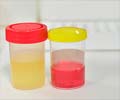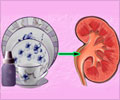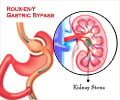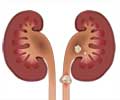Kidney stones in children—considered all but a medical aberration until recently—are now becoming a fairly common condition. It’s a growing and disturbing trend that has pediatricians at the Johns Hopkins Children’s Center, and around the country, sounding the alarm.
While doctors have yet to quantify the precise increase and tease out the factors behind it—better detection devices probably play some role—pediatricians agree that too much salt and too little drinking water in children’s diets are probably the main culprits.“More and more children with kidney stones are coming to us,” says kidney specialist Alicia Neu, M.D., co-director of the kidney stone clinic at the Children’s Center. “While this is somewhat unexpected, it is not totally surprising given that so many other conditions are on the rise in children due to poor diet, such as high blood pressure, type 2 diabetes and obesity to name a few.”
Kidney stones are rarely a serious condition, but can be extremely painful and can cause urinary tract infections.
Limiting salt in the diet and drinking plenty of water are the best ways to prevent the most common types of kidney stones or slow their growth. Here are several simple tips to keep in mind:
• Doctors recommend consuming no more than 2.4 grams of sodium a day, or 6 grams (1 teaspoon) of table salt a day.
• Stay away from salty snacks, such as chips and pretzels, which are loaded with sodium.
• Processed foods, including smoked and cured meats, as well as sodas and canned products have the highest sodium content.
• Look for “no salt added” or “low sodium” labels when buying food.
• Rinse canned foods under water to remove some of the sodium.
• Tea, coffee, dark chocolate, spinach, nuts and wheat bran can also increase the risk of certain types of kidney stones.
• A child needs to drink two liters (64 ounces) of water a day.
• Sugar-laden juices and sodas don’t count as proper hydration.
“Clearly, when it comes to water consumption, what is needed is a cultural change, and schools have to play a role in making bottled water available and limiting soft drinks, as well as allowing children to visit the restroom as needed,” says urologist Yegappan Lakshmanan, M. D., co-director of the Center’s pediatric stone clinic.
A good way for a child to tell if he or she is drinking enough water is the urge to urinate every three hours. If a child urinates less frequently than that, it might be a sign of dehydration, Lakshmanan says.
Advertisement
• Intense pain in the lower-back and/or in the sides
• Frequent and painful urination
• Blood in the urine and/or cloudy urine
• Urinary tract infections, secondary to kidney stones, accompanied by fever
Advertisement
Source-Newswise
SRM











